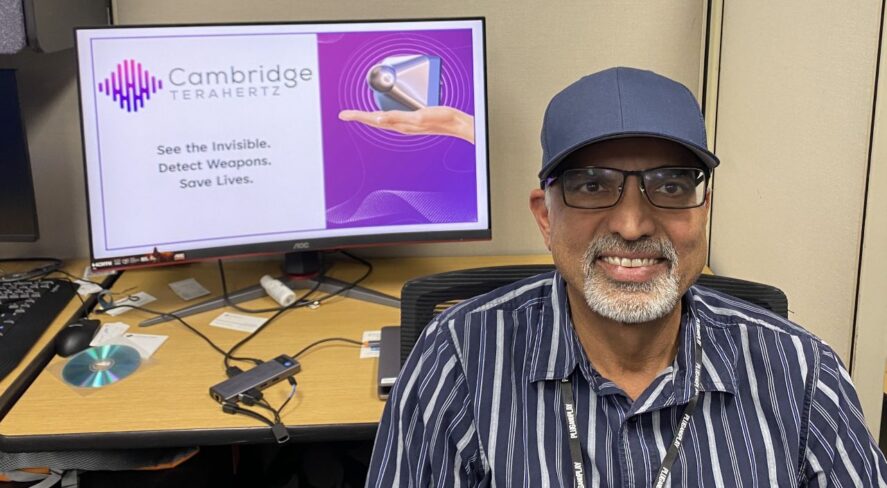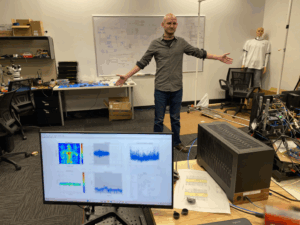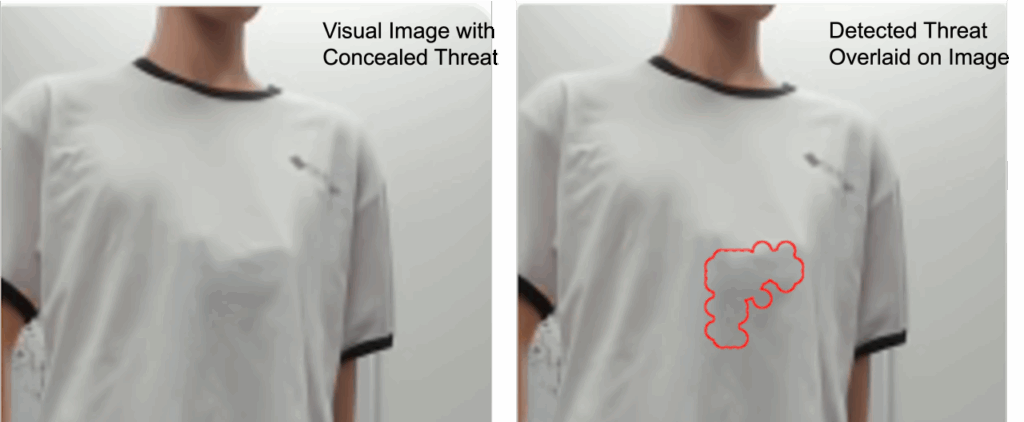SIA New Member Profile: Cambridge Terahertz

New Security Industry Association (SIA) member Cambridge Terahertz uses terahertz wave technology to democratize airport-grade security and loss prevention technology. The company is headquartered in Sunnyvale, California.
SIA spoke with Kittur Nagesh, chief product officer of Cambridge Terahertz, about the company, the security industry and working with SIA.
Tell us the story of your company.

Kittur Nagesh: Every startup has that moment – the spark that sets everything in motion. For us, it was something deeply personal. Our founder and CEO, Nathan Monroe, experienced the devastating impact of gun violence firsthand at his high school. Not too long after he received his diploma, his beloved principal was tragically murdered in a shooting at his school. That moment didn’t just change his life – it became the driving force behind everything we’re building today.
Unfortunately, this type of tragedy represents a pattern that occurs all too often in this country and others.
As a society, we have reached a stage where screening individuals for weapons is critical to addressing risk of weapons violence. Especially in law enforcement and settings such as schools, hospitals, airports, government facilities, businesses and event venues. Plus, detection of concealed/disguised drugs is essential to curtail trafficking, while detection of contraband, such as concealed memory sticks, is critical for maintaining data security and protecting intellectual property.
While doing his research at MIT towards his Ph.D. in terahertz technologies and applications, Nathan realized the numerous advantages of using terahertz in mitigating weapons-related violence in our society and saving lives. That is in large part why we chose concealed weapons detection as our first application at Cambridge Terahertz.

What solutions/services does your business offer in the security industry? And what makes your offerings or your company unique?
KN: There are numerous applications for terahertz solutions. Some examples are concealed weapons detection, package inspection, nondestructive testing and medical applications. Cambridge Terahertz offers a compact, contact-free, artificial intelligence-powered concealed weapons detection solution to enhance physical security in schools, hospitals, warehouses, and government and enterprise buildings.
Our system sees through clothing, luggage, plastic, paper, ceramics and cardboard to detect concealed threats, including firearms, knives, and explosives. It also identifies contraband such as drugs, USB devices and unauthorized electronics like cell phones. Our solution is designed with privacy in mind. We do not capture or store personally identifiable information. In other words, we provide enhanced physical security without compromising individual rights.
Our sustainable differentiators are in the areas of size or form factor, price performance and network intelligence as we bring airport-grade security to the masses.
What is something we might not know about your company – or something new you are doing in security?

KN: The current “gold standard” people screening technology is millimeter-wave imaging. While effective, such a solution is expensive, large and inconvenient to deploy and maintain, thus reducing its applicability to only a limited number of settings, such as airports. Other technologies, such as metal detectors and AI-enabled computer vision solutions, have limited detection capabilities and high false positive rates and serve merely as deterrents.
Our solution is democratizing airport-grade security by bringing it to the masses in a compact form factor. Just like you deploy surveillance cameras to see what is visible, you can now deploy our terahertz sensor system to see the invisible, detect weapons and save lives.
What is your company’s vision, and what are your goals for the security industry?
KN: Our mission is timely and impactful. “See the invisible. Detect weapons. Save lives.”
Our solution sees through clothing, luggage, paper, plastic and a variety of other materials to proactively detect concealed weapons, such as guns, knives and explosives. We mitigate weapons-related violence before they start while respecting people’s privacy.

What are your predictions for the security industry in the short and long term?
KN: In the short term, our prediction is that schools, hospitals, warehouses and government and commercial buildings, will deploy people screening solutions that will be accurate and just blend with the environment. These solutions will apply AI in real time to detect a variety of weapons and contraband and save lives.
I also feel customers will demand an integrated approach to both physical security and cybersecurity as the boundaries between them are blurring. Simultaneously, there will be a push back to balance security with privacy.
In the long term, I see autonomous, contact-free security systems at the edge detecting a variety of threats in real time. This also means that access control will become fully personalized based on roles, responsibilities, location and context.
What are the biggest challenges facing your company and/or others in the security industry?
KN: I think there are four challenges that our customers and security industry are tackling.
- How do we create physical security and people screening solutions that are contact-free and frictionless that blend with our environments?
- How do we respect privacy without compromising security?
- How do we make the solutions affordable so that operational costs do not become a barrier? As you know, security is perceived as an expense in enterprises.
- And last but not the least, how do we avoid data deluge and instead focus on information value? AI can help us immensely here.
What do you enjoy most about being at your company – and in the security industry?
KN: There is a missionary zeal and a calling in developing the concealed weapons detection solution which will proactively prevent workplace violence and save lives. We have come a long way from having just an idea to a customer solution. And none of that would have happened without our world-class team.
What does SIA offer that is most important to you/your company? And what do you most hope to get out of your membership with SIA?
KN: Networking with security industry specialists, partners, integrators and, of course, customers. The member companies and security practitioners generously share their expertise and best practices to make our world a better place. We hope to showcase our innovative solutions, obtain and/or validate solution and customer insights, expand our access to customers and partners and influence the future direction of SIA.
How does your organization engage with SIA? What are your plans for involvement in the next year?
KN: Having worked on standards bodies and other industry consortia, we fully realize what we get out of SIA will manifest only when we think of what we can provide. While we compete to be the first to innovate, we will collaborate to solve our customers’ problems. Driving standards, creating integrated solutions, promoting interoperability and sharing best practices are some of the ways we plan to actively engage with SIA.
The views and opinions expressed in guest posts and/or profiles are those of the authors or sources and do not necessarily reflect the official policy or position of the Security Industry Association.
